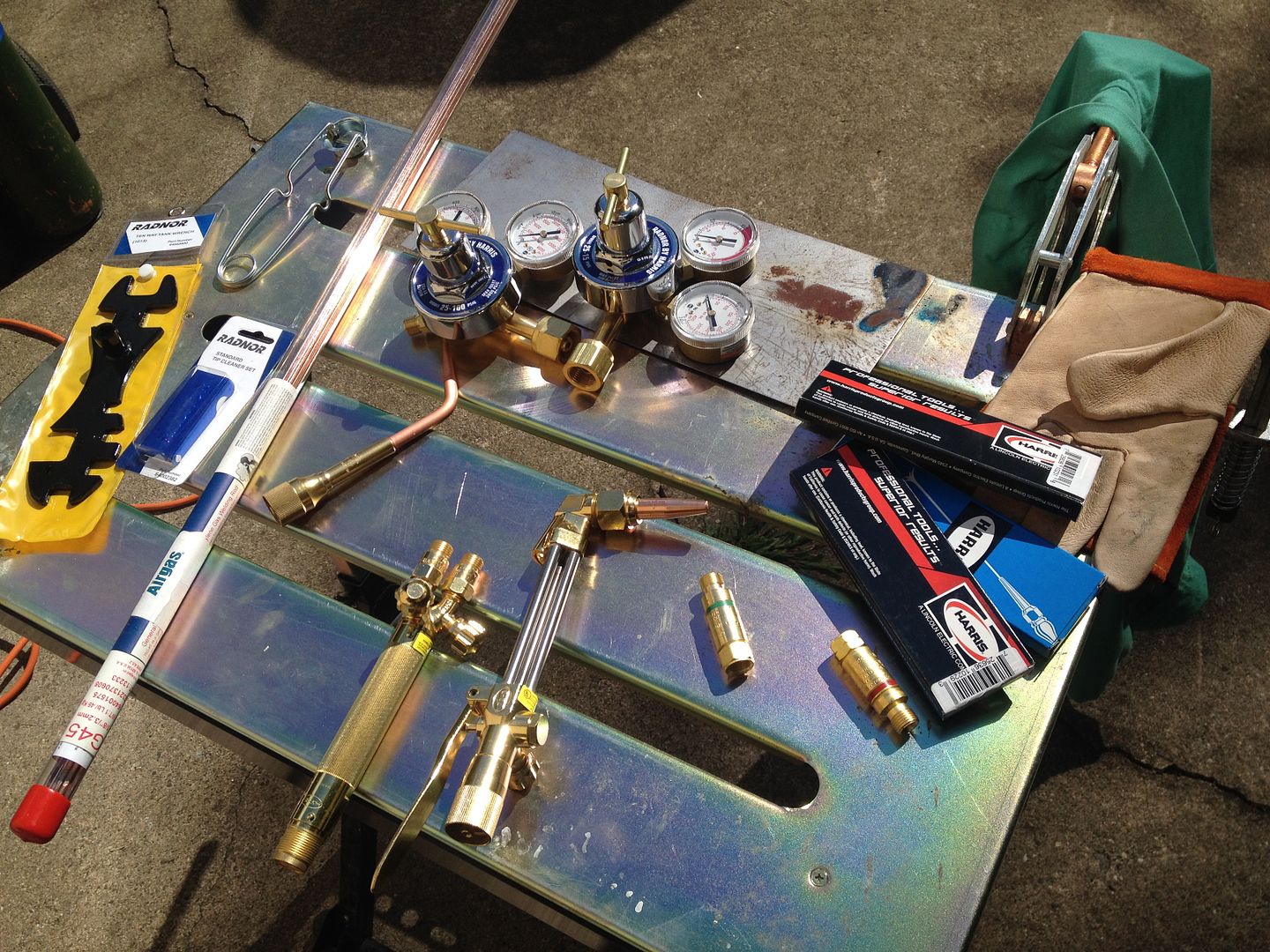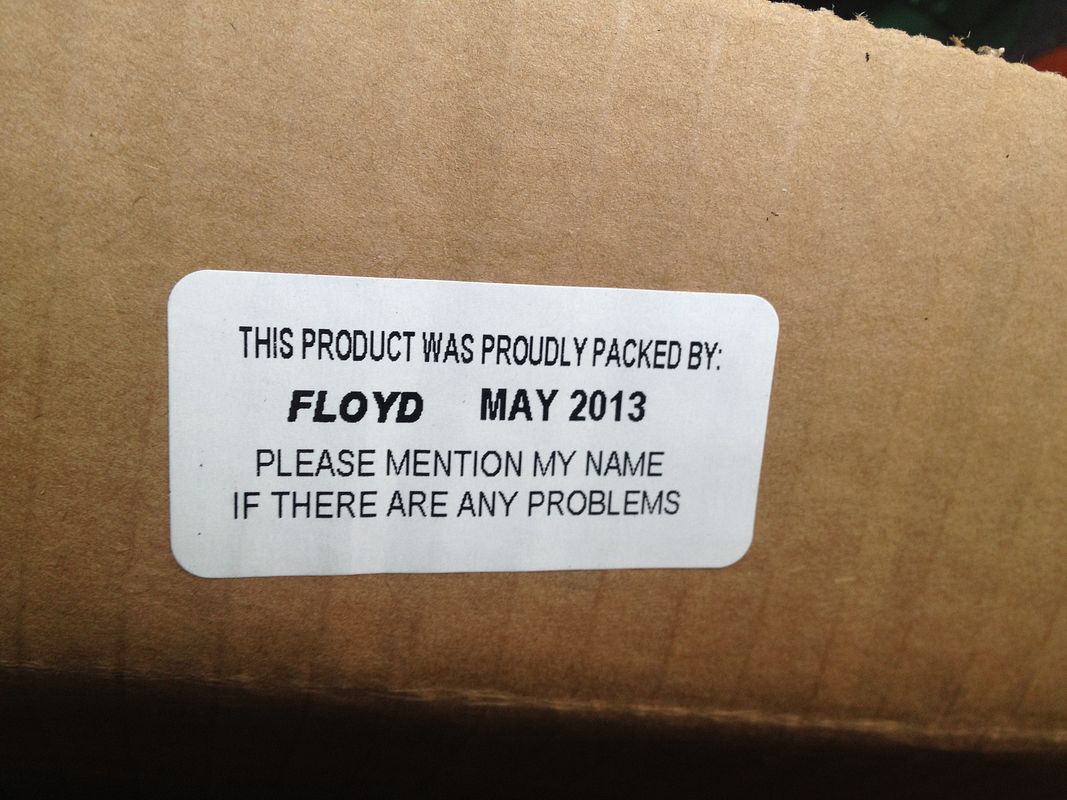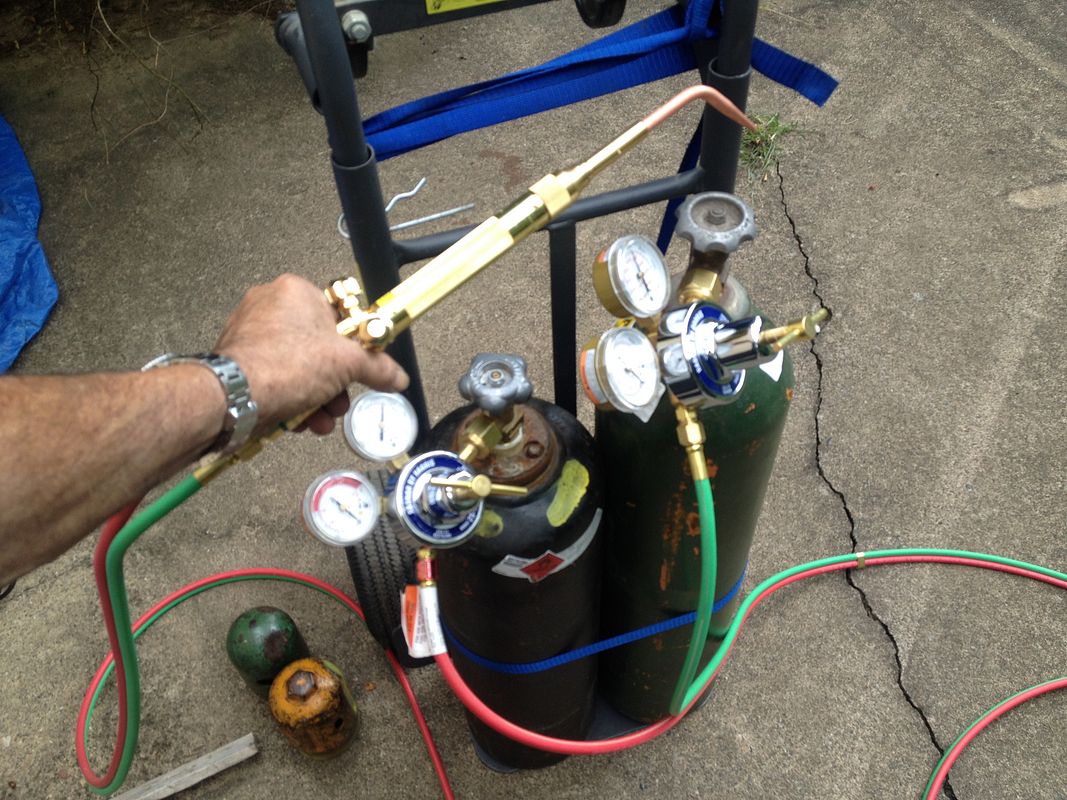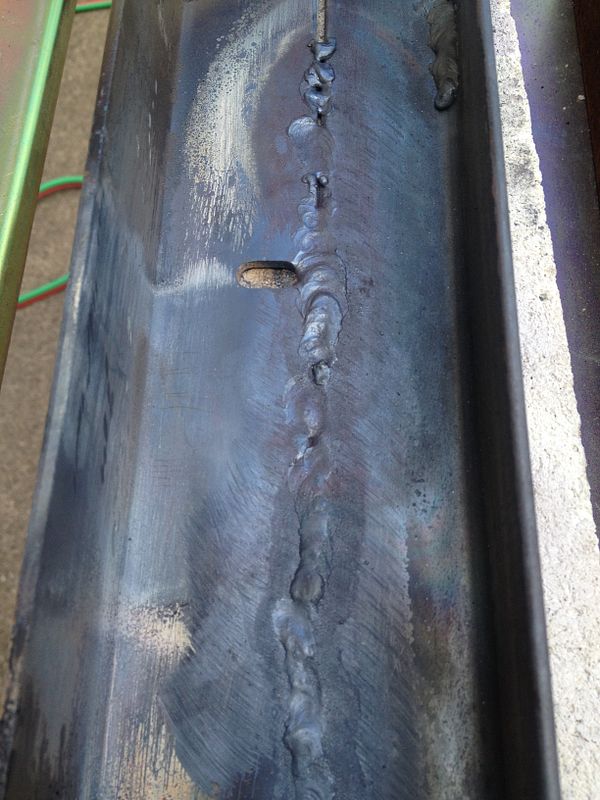Sshire
Well-Known Member
- Joined
- Jun 29, 2011
- Messages
- 936
- Reaction score
- 259
About a year ago, I bought a 110v Hobart MIG. Unboxed it , watched instructional videos, and proceeded to weld a piece of CRS to the top of my brand new portable welding table.
A few days later I ran into my Cardiologist at the local coffee shop. He's fascinated by my engines.* I told him about my new MIG. Looooong pause. So he proceeds to give me a 10 minute lecture about how to setup and use the MIG so that it "probably" won't cause a momentary shutdown of my pacemaker. He had just been to a conference and one of the lectures was about pacemakers and various "industrial" equipment.
So, it sat in the corner. My feeling was that it just wasn't worth it. I stopped by Airgas to get some silver solder and was telling one of the counter guys my MIG story. Long story short, he bought my MIG and I left with a Harris welding and cutting setup, oxygen, acetylene, rods, etc.
Wait, I'm actually getting to the question here.
As I do with most things:
I've read the gas sections of The Welder's handbook, Audels Pocket Welding Guide is on the nightstand, every Harris, Victor and Smith YouTube video has been viewed multiple times, as has WeldingTipsAndTricks. Regulators and torch are in place, pressure and bubble leak tests done.
I have a bunch of practice steel from the scrapyard. Gloves, goggles, cap, FR jacket and fire extinguisher are in position.
WHAT DID I MISS? Should I just grab a piece of steel and weld?
A few days later I ran into my Cardiologist at the local coffee shop. He's fascinated by my engines.* I told him about my new MIG. Looooong pause. So he proceeds to give me a 10 minute lecture about how to setup and use the MIG so that it "probably" won't cause a momentary shutdown of my pacemaker. He had just been to a conference and one of the lectures was about pacemakers and various "industrial" equipment.
So, it sat in the corner. My feeling was that it just wasn't worth it. I stopped by Airgas to get some silver solder and was telling one of the counter guys my MIG story. Long story short, he bought my MIG and I left with a Harris welding and cutting setup, oxygen, acetylene, rods, etc.
Wait, I'm actually getting to the question here.
As I do with most things:
I've read the gas sections of The Welder's handbook, Audels Pocket Welding Guide is on the nightstand, every Harris, Victor and Smith YouTube video has been viewed multiple times, as has WeldingTipsAndTricks. Regulators and torch are in place, pressure and bubble leak tests done.
I have a bunch of practice steel from the scrapyard. Gloves, goggles, cap, FR jacket and fire extinguisher are in position.
WHAT DID I MISS? Should I just grab a piece of steel and weld?








